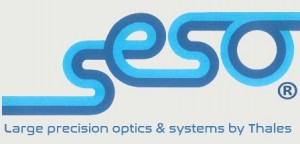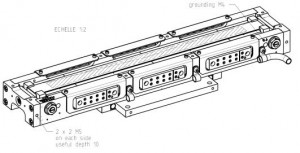This article appeared in E-news of Photoniques “The French-speaking Review of the optical solutions”, which you can consult on the following link: http: // www.photoniques.com on Monday, April 28th, 2014 09:05
On March 21st, 2014, the Beamline PROXIMA 2 of the synchrotron SOLEIL celebrated its first year of opening to the external users stemming from the French scientific community and the nearby countries. PROXIMA 2 is at the forefront of the characterization of the 3D structure of biological macromolecules for atomic resolution: proteins, DNA and ARN, as well as their assemblies and give a complex which form in particular ribosomes and virus. The arrangement of atoms (sometimes several thousands) in the biological molecules determines their biochemical functions. As these molecules make only some nanometers, the crystallography of X-rays is the most common method used to determine the atomic layout. But scientists have to face a major problem: how to create big and good quality enough molecules to be able to be studied?
The obtaining of the adequate crystal can request hundreds of tests, and hundreds of crystals must be analyzed under X-rays before determining a 3D structure. The extreme focusing of the beam of X-rays on PROXIMA 2 allows to study the smallest crystals, which represents working months earned by the scientists on the preparation of crystals. Besides, the crystals of biomolecules are rarely isolated objects. In fact, they are often cracked, deformed or even imbricated in other crystals.
What makes difficult even impossible the determination of structures. Even there, thanks to the very thin focusing of the beam of X-rays of PROXIMA 2, the scientists can target a zone of study in a rough crystal. This research is automated on PROXIMA 2 via 2D scanners.
A large number of structures of proteins have been determined with the X-rays on PROXIMA 2, whether they are proteins of viruses, bacteria or even of human origin. These proteins have varied functions going from the catalysis or the biosynthesis (enzymes) to the cellular signal (transduction of signal) via the immunologic answers (as cytokines for the asthma).
One of the key factors which made possible the experimental resolution of the structure of this complex is the use of X-rays micro-focused on the Beamline of SOLEIL.
We would like to point out that this Beamline uses the last generation of Bimorph supplied by Thales SESO and that it is the first time that a mirror polished on both sides has been used.
This article appeared in E-news of Photoniques “The French-speaking Review of the optical solutions”, which you can consult on the following link: http: // www.photoniques.com on Monday, April 28th, 2014 09:05
On March 21st, 2014, the Beamline PROXIMA 2 of the synchrotron SOLEIL celebrated its first year of opening to the external users stemming from the French scientific community and the nearby countries. PROXIMA 2 is at the forefront of the characterization of the 3D structure of biological macromolecules for atomic resolution: proteins, DNA and ARN, as well as their assemblies and give a complex which form in particular ribosomes and virus. The arrangement of atoms (sometimes several thousands) in the biological molecules determines their biochemical functions. As these molecules make only some nanometers, the crystallography of X-rays is the most common method used to determine the atomic layout. But scientists have to face a major problem: how to create big and good quality enough molecules to be able to be studied?
The obtaining of the adequate crystal can request hundreds of tests, and hundreds of crystals must be analyzed under X-rays before determining a 3D structure. The extreme focusing of the beam of X-rays on PROXIMA 2 allows to study the smallest crystals, which represents working months earned by the scientists on the preparation of crystals. Besides, the crystals of biomolecules are rarely isolated objects. In fact, they are often cracked, deformed or even imbricated in other crystals.
What makes difficult even impossible the determination of structures. Even there, thanks to the very thin focusing of the beam of X-rays of PROXIMA 2, the scientists can target a zone of study in a rough crystal. This research is automated on PROXIMA 2 via 2D scanners.
A large number of structures of proteins have been determined with the X-rays on PROXIMA 2, whether they are proteins of viruses, bacteria or even of human origin. These proteins have varied functions going from the catalysis or the biosynthesis (enzymes) to the cellular signal (transduction of signal) via the immunologic answers (as cytokines for the asthma).
One of the key factors which made possible the experimental resolution of the structure of this complex is the use of X-rays micro-focused on the Beamline of SOLEIL.
We would like to point out that this Beamline uses the last generation of Bimorph supplied by Thales SESO and that it is the first time that a mirror polished on both sides has been used.




